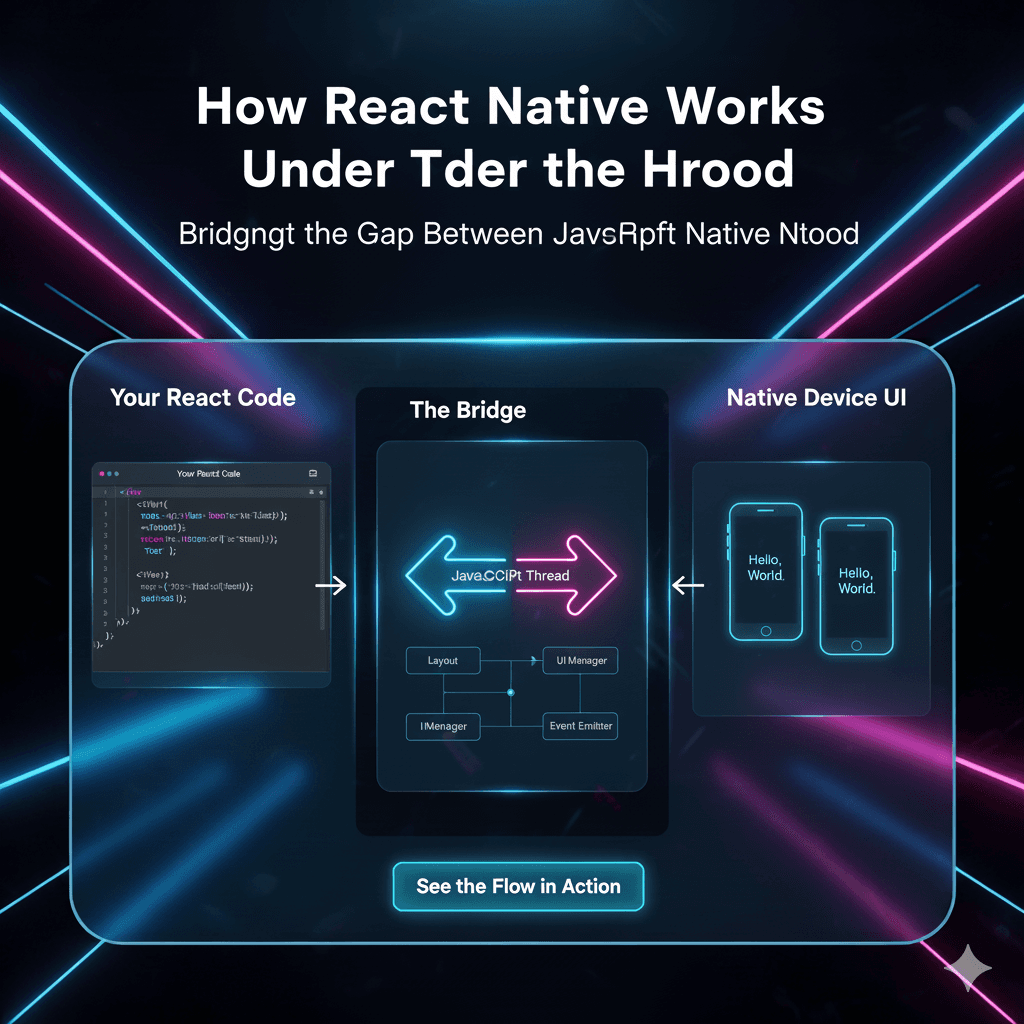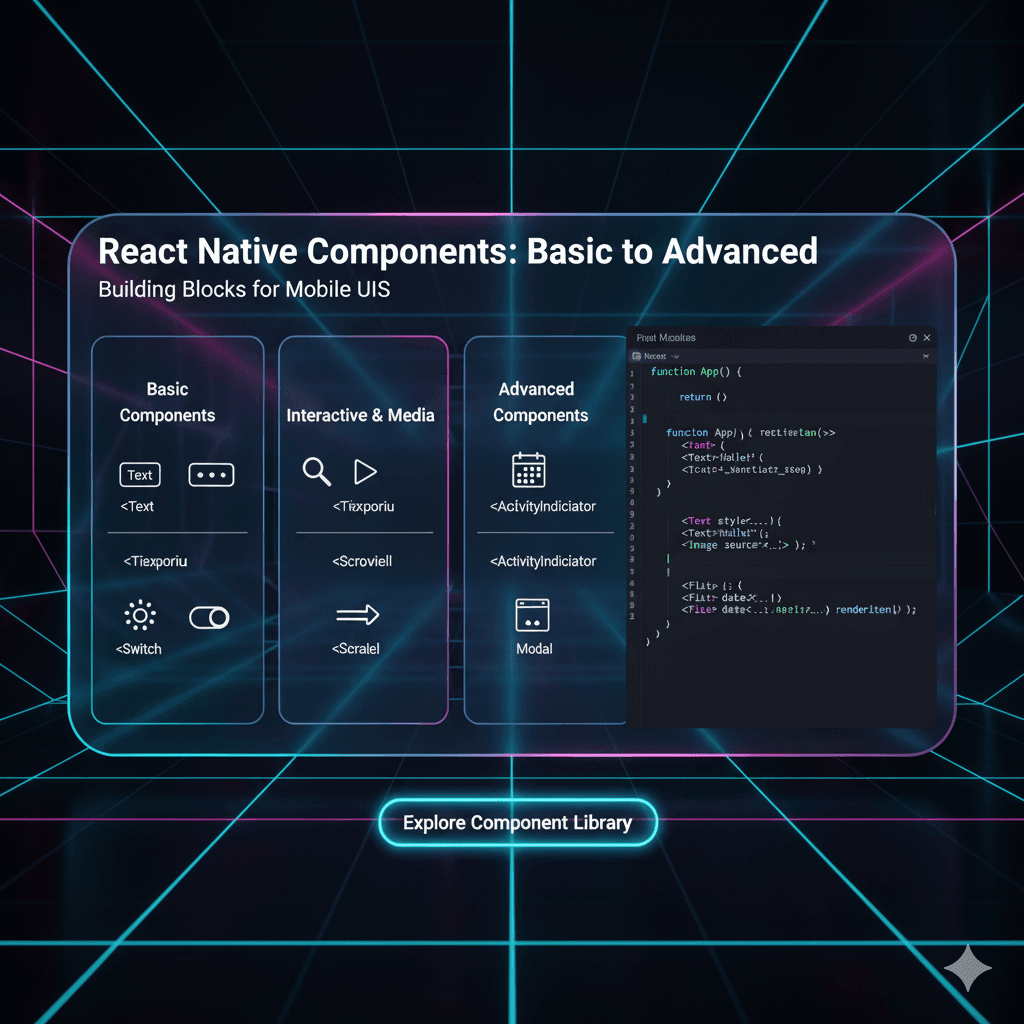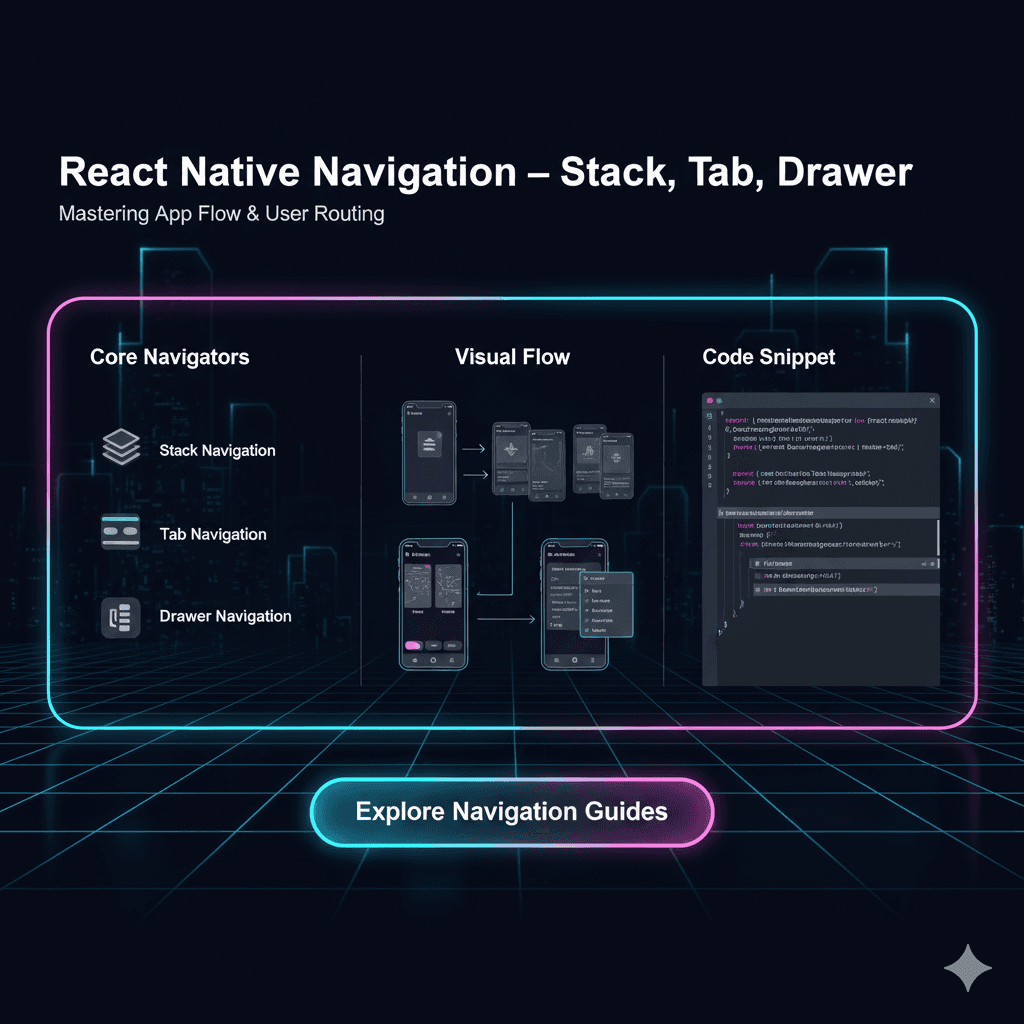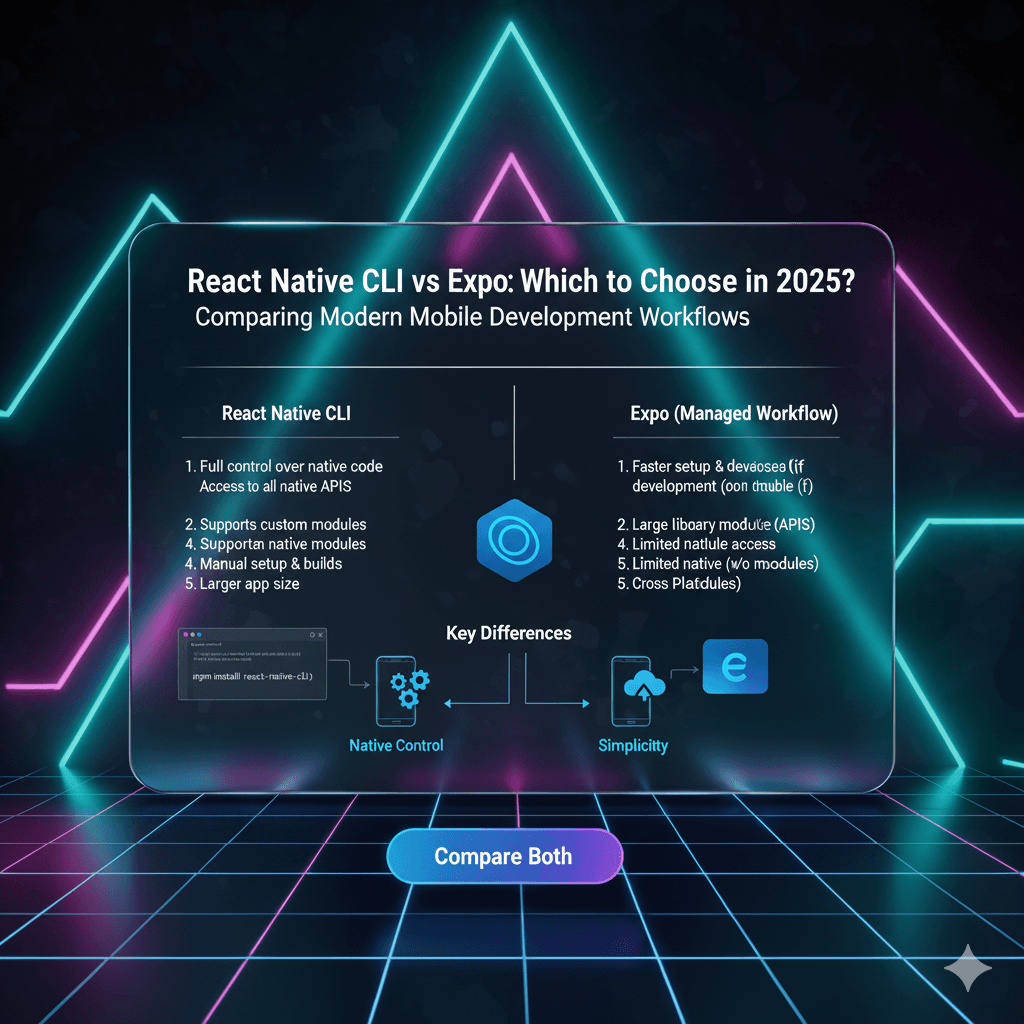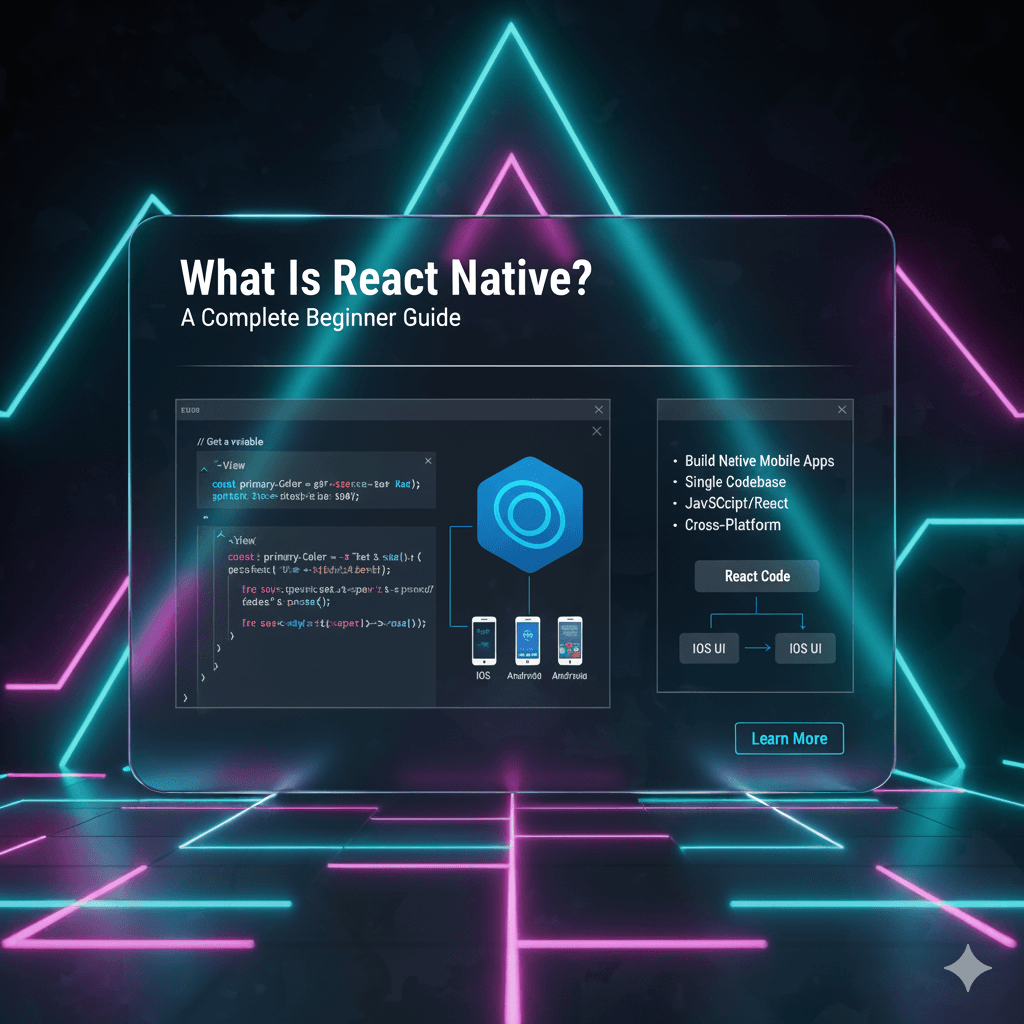Deep Linking in React Native: The Ultimate Guide for 2025

Master Deep Linking in React Native! This in-depth guide covers setup, examples, real-world use cases, and best practices to seamlessly navigate users within your app. Level up your skills with CoderCrafter's professional courses.

Deep Linking in React Native: The Ultimate Guide for 2025
Deep Linking in React Native: The Ultimate Guide for 2025
Alright, let's talk about a superpower for your React Native app that you're probably not using to its full potential. You know that frustrating moment when you click a link to a specific product, a profile, or a post, and it just dumps you on the app's home screen? Yeah, we’ve all been there. It’s a user experience nightmare.
What if you could teleport your user directly to the exact screen they wanted to see? That, my friends, is the magic of Deep Linking.
In this no-fluff, ultimate guide, we're going to break down everything about deep linking in React Native. We're talking the "what," the "why," and the all-important "how." By the end of this, you'll be implementing deep links like a seasoned pro. Let's dive in.
What Exactly is Deep Linking? (In Plain English)
Think of your app like a massive building with many rooms (screens).
A regular link (like
myapp://) is like dropping someone at the main entrance (the home screen). They have to find their own way to the "Shoes - Size 10" department. Annoying.A deep link (like
myapp://products/shoes/123) is like giving them a VIP pass that teleports them directly to the exact aisle, shelf, and product they're looking for. Magic.
In technical terms, a deep link is a URL that points to a specific location within a mobile application, rather than just launching the app. It’s a bridge between the web and your app's internal navigation.
Why Should You Absolutely Care?
Skyrocket User Engagement: Make it effortless for users to get to content.
Personalized Marketing: Send a push notification with a link directly to a sale item.
Seamless Web-to-App Transition: If a user is browsing your website on their phone and clicks "Open in App," a deep link can take them to the exact same page in the app.
Better User Retention: A smooth, intuitive experience keeps people coming back.
This is the kind of polished, professional feature that separates hobby projects from production-ready applications. Speaking of professional, if you're looking to build a solid foundation in modern development, to learn professional software development courses such as Python Programming, Full Stack Development, and MERN Stack, visit and enroll today at codercrafter.in. Now, back to the code!
Diving Deeper: Types of Links
Before we get our hands dirty, let's clarify the terminology:
Deep Links: The general term for any link that takes you to a specific place in an app.
Deferred Deep Links: This is the next-level stuff. What if the user doesn't have the app installed? A deferred deep link will first send them to the App Store/Play Store to download the app, and after installation, open the app to the intended location. Pure sorcery.
Universal Links (iOS) & App Links (Android): These are the standardized, platform-specific ways to handle deep linking. They use HTTP/HTTPS URLs (like
https://mysite.com/product/abc) instead of a custom scheme (myapp://). This is crucial because they don't show that annoying "Open in..." popup; the transition is seamless.
Implementing Deep Linking in React Native: A Step-by-Step Guide
We'll focus on the most common and practical approach: using the react-navigation library, which has built-in support for deep linking, and setting up both custom URL schemes and Universal/App Links.
Prerequisites
A React Native project (obviously).
@react-navigation/nativeand a stack navigator installed.
Step 1: Define Your Linking Configuration
This is where you create the "map" that translates URLs to your app's screens.
First, install the required package for the linking configuration to work seamlessly:
bash
npm install @react-navigation/nativeNow, in your main navigation file (e.g., App.js or Navigation.js), define your linking config.
javascript
import { NavigationContainer } from '@react-navigation/native';
import { createStackNavigator } from '@react-navigation/stack';
// ... your screen imports ...
const Stack = createStackNavigator();
const linking = {
prefixes: [
'myapp://', // Your custom scheme for development & fallback
'https://codercrafter.in' // Your website domain for Universal/App Links
],
config: {
screens: {
Home: 'home',
Profile: 'user/:id', // Maps `myapp://user/123` to Profile screen with `id=123`
ProductDetail: 'products/:productId', // Maps `myapp://products/456` to ProductDetail with `productId=456`
Settings: 'settings',
},
},
};
function App() {
return (
<NavigationContainer
linking={linking}
fallback={<Text>Loading...</Text>} // Show while resolving the link
>
<Stack.Navigator>
{/* Your screen components here */}
<Stack.Screen name="Home" component={HomeScreen} />
<Stack.Screen name="Profile" component={ProfileScreen} />
<Stack.Screen name="ProductDetail" component={ProductDetailScreen} />
</Stack.Navigator>
</NavigationContainer>
);
}Step 2: Configure for iOS & Android
This is the platform-specific part. You can't just run the app and expect it to work. You need to tell iOS and Android to listen for your custom URL scheme.
For Android:
Open android/app/src/main/AndroidManifest.xml. Inside the <activity> tag for your .MainActivity, add an <intent-filter>.
xml
<activity
android:name=".MainActivity"
android:exported="true">
<!-- ... other intent filters ... -->
<!-- Add this new intent filter for your custom scheme -->
<intent-filter>
<action android:name="android.intent.action.VIEW" />
<category android:name="android.intent.category.DEFAULT" />
<category android:name="android.intent.category.BROWSABLE" />
<data android:scheme="myapp" />
</intent-filter>
</activity>For iOS:
Open your project in Xcode, or edit the ios/YourProjectName/Info.plist file directly. Add this inside the <dict> tag:
xml
<key>CFBundleURLTypes</key>
<array>
<dict>
<key>CFBundleTypeRole</key>
<string>Editor</string>
<key>CFBundleURLName</key>
<string>com.yourcompany.yourapp</string>
<key>CFBundleURLSchemes</key>
<array>
<string>myapp</string>
</array>
</dict>
</array>Boom! You now have basic deep linking working. You can test it by typing myapp://products/789 into your mobile browser's address bar. It should ask to open your app and navigate to the ProductDetail screen.
Step 3: Handling Incoming Data in Your Screens
Now, how do you get the productId or userId from the URL? react-navigation passes them as route parameters.
In your ProductDetailScreen.js:
javascript
function ProductDetailScreen({ route }) {
// The `productId` comes from the URL pattern we defined: `products/:productId`
const { productId } = route.params;
// Use this productId to fetch data from your API, context, etc.
React.useEffect(() => {
if (productId) {
fetchProductDetails(productId);
}
}, [productId]);
return (
<View>
<Text>Viewing details for product ID: {productId}</Text>
{/* Render your product details here */}
</View>
);
}Real-World Use Cases: Where This Stuff Actually Shines
This isn't just academic. Here’s how top apps use deep linking:
E-commerce:
https://myshop.com/product/cool-sneakers-> Opens the app directly to the "Cool Sneakers" product page.Social Media:
https://mysocialapp.com/profile/john-doe-> Opens John Doe's profile in the app.Push Notifications: "Your order is out for delivery! Track it here." The "here" is a deep link to the order tracking screen.
Marketing Emails: "We miss you! Here's a 20% off coupon." The link opens the app to a pre-filled cart with the coupon applied.
Implementing these features requires a deep understanding of both front-end and back-end systems. If you want to master building these kinds of integrated, real-world applications, our Full Stack Development course at codercrafter.in is exactly what you need.
Best Practices & Pro Tips
Plan Your URL Structure: Think of it like your app's sitemap. Keep it logical and consistent (e.g.,
/users/:id,/products/:category/:id).Handle Edge Cases: What if the link is broken? Always have a fallback, like redirecting to the home screen with an error message.
Test, Test, Test: Test on both real devices and emulators. Test with the app in the foreground, background, and completely closed.
Use a Third-Party Service for Deferred Deep Links: For deferred deep linking (the "user doesn't have the app" scenario), consider services like Branch.io, Firebase Dynamic Links, or AppsFlyer. They handle the complexity for you.
Secure Your Links: Validate the data coming from the URL to prevent malicious attacks.
FAQs: Your Deep Linking Questions, Answered
Q: My deep link opens the app but doesn't navigate to the right screen. What's wrong?
A: 99% of the time, it's a typo in your linking configuration. Double-check the screen names in your config object and the URL patterns. They must match exactly.
Q: Can I use deep links to pass complex data, not just IDs?
A: Technically, yes, using query parameters (myapp://product?id=123&color=red). But it's messy. The best practice is to pass a unique identifier (like an ID) and then let your app fetch the full, fresh data from your backend.
Q: What's the difference between a custom scheme and a Universal/App Link?
A: Custom schemes (myapp://) are easier to set up but are less "graceful" (they show a popup). Universal/App Links (https://...) provide a seamless, professional user experience but require more setup on your web server (like hosting a apple-app-site-association file).
Q: Is this enough for a production app?
A: The setup we covered is the foundation. For a production app, you must implement Universal Links (iOS) and App Links (Android) for that seamless feel, and strongly consider a service for deferred deep linking to handle new user acquisition campaigns.
Conclusion: Your App's Missing Link
Deep linking is no longer a "nice-to-have" feature; it's a fundamental part of a modern, user-centric mobile application. It breaks down the walls between the web and your app, creating a fluid journey that users love.
By following this guide, you've taken a huge step towards building a more professional and engaging app. Remember, the key is to start simple with a custom scheme and then level up to Universal/App Links as you move towards production.
Feeling inspired to build the next big thing? This is just one piece of the puzzle. To truly become a job-ready developer and master technologies like React Native, Node.js, and databases, you need a structured path. To learn professional software development courses such as Python Programming, Full Stack Development, and MERN Stack, visit and enroll today at codercrafter.in. We'll help you bridge the gap between tutorial hell and a thriving tech career.
